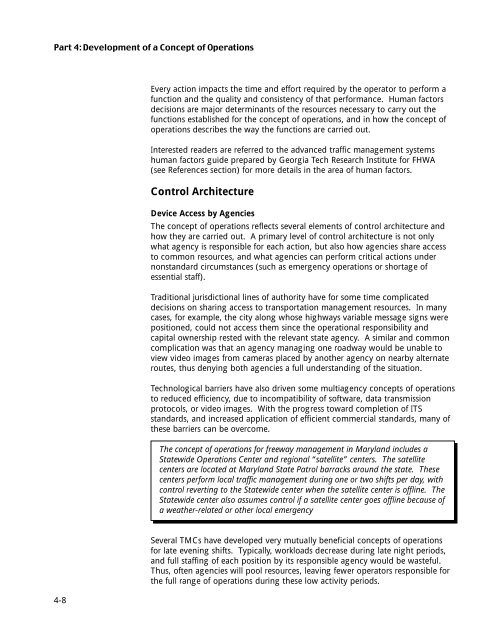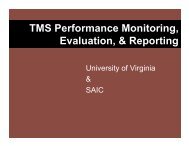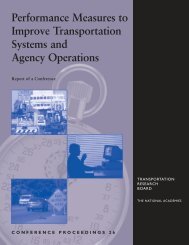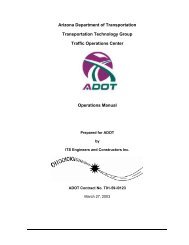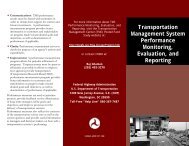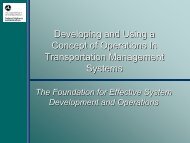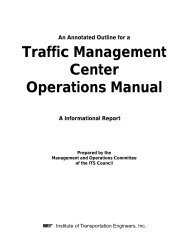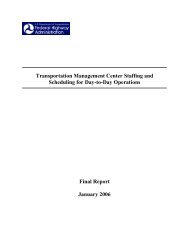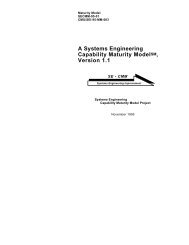Transportation Management Center Concepts of Operations
Transportation Management Center Concepts of Operations
Transportation Management Center Concepts of Operations
- No tags were found...
Create successful ePaper yourself
Turn your PDF publications into a flip-book with our unique Google optimized e-Paper software.
Every action impacts the time and effort required by the operator to perform afunction and the quality and consistency <strong>of</strong> that performance. Human factorsdecisions are major determinants <strong>of</strong> the resources necessary to carry out thefunctions established for the concept <strong>of</strong> operations, and in how the concept <strong>of</strong>operations describes the way the functions are carried out.Interested readers are referred to the advanced traffic management systemshuman factors guide prepared by Georgia Tech Research Institute for FHWA(see References section) for more details in the area <strong>of</strong> human factors.Control ArchitectureDevice Access by AgenciesThe concept <strong>of</strong> operations reflects several elements <strong>of</strong> control architecture andhow they are carried out. A primary level <strong>of</strong> control architecture is not onlywhat agency is responsible for each action, but also how agencies share accessto common resources, and what agencies can perform critical actions undernonstandard circumstances (such as emergency operations or shortage <strong>of</strong>essential staff).Traditional jurisdictional lines <strong>of</strong> authority have for some time complicateddecisions on sharing access to transportation management resources. In manycases, for example, the city along whose highways variable message signs werepositioned, could not access them since the operational responsibility andcapital ownership rested with the relevant state agency. A similar and commoncomplication was that an agency managing one roadway would be unable toview video images from cameras placed by another agency on nearby alternateroutes, thus denying both agencies a full understanding <strong>of</strong> the situation.Technological barriers have also driven some multiagency concepts <strong>of</strong> operationsto reduced efficiency, due to incompatibility <strong>of</strong> s<strong>of</strong>tware, data transmissionprotocols, or video images. With the progress toward completion <strong>of</strong> ITSstandards, and increased application <strong>of</strong> efficient commercial standards, many <strong>of</strong>these barriers can be overcome.The concept <strong>of</strong> operations for freeway management in Maryland includes aStatewide <strong>Operations</strong> <strong>Center</strong> and regional “satellite” centers. The satellitecenters are located at Maryland State Patrol barracks around the state. Thesecenters perform local traffic management during one or two shifts per day, withcontrol reverting to the Statewide center when the satellite center is <strong>of</strong>fline. TheStatewide center also assumes control if a satellite center goes <strong>of</strong>fline because <strong>of</strong>a weather-related or other local emergencySeveral TMCs have developed very mutually beneficial concepts <strong>of</strong> operationsfor late evening shifts. Typically, workloads decrease during late night periods,and full staffing <strong>of</strong> each position by its responsible agency would be wasteful.Thus, <strong>of</strong>ten agencies will pool resources, leaving fewer operators responsible forthe full range <strong>of</strong> operations during these low activity periods.4-8


